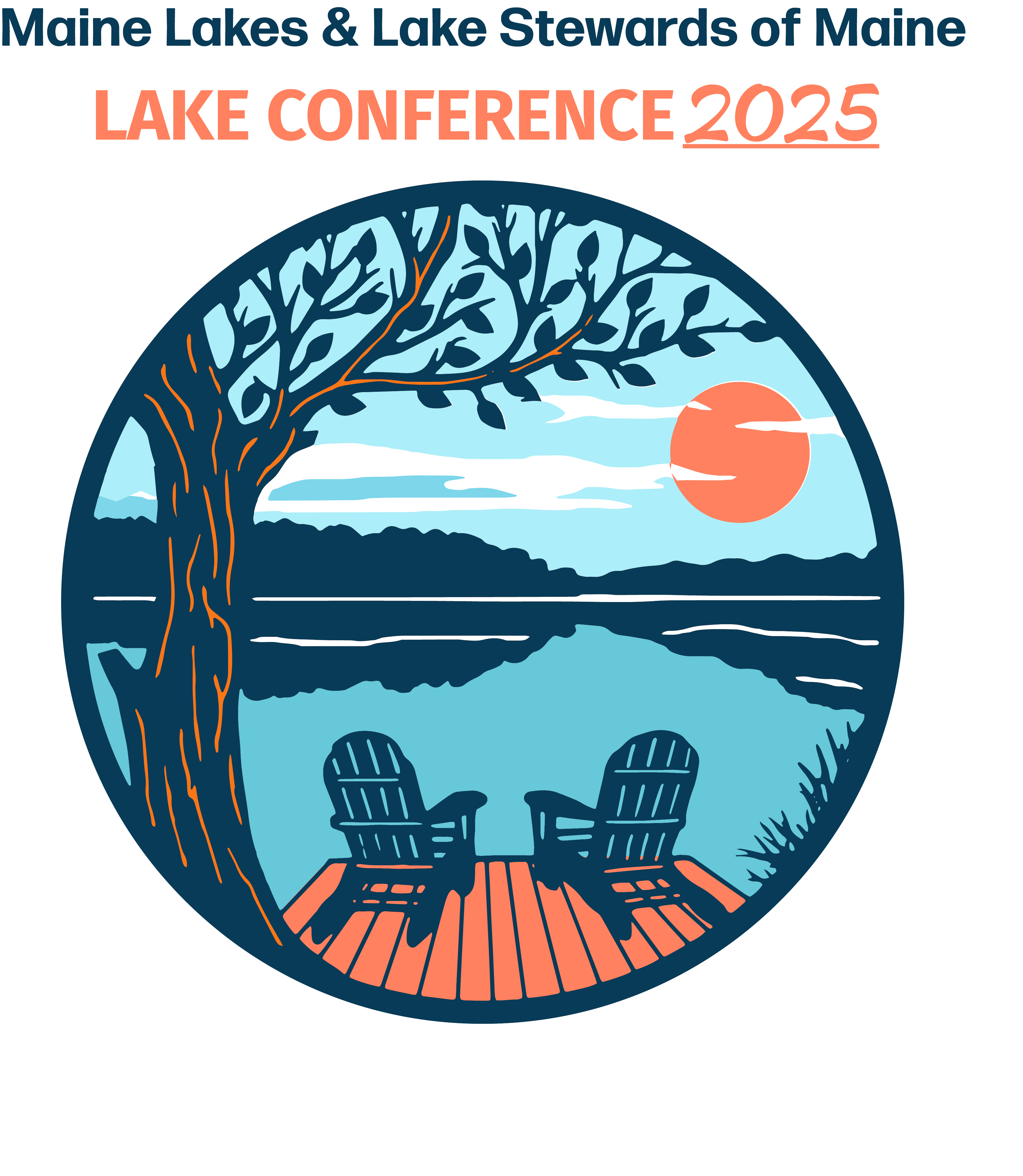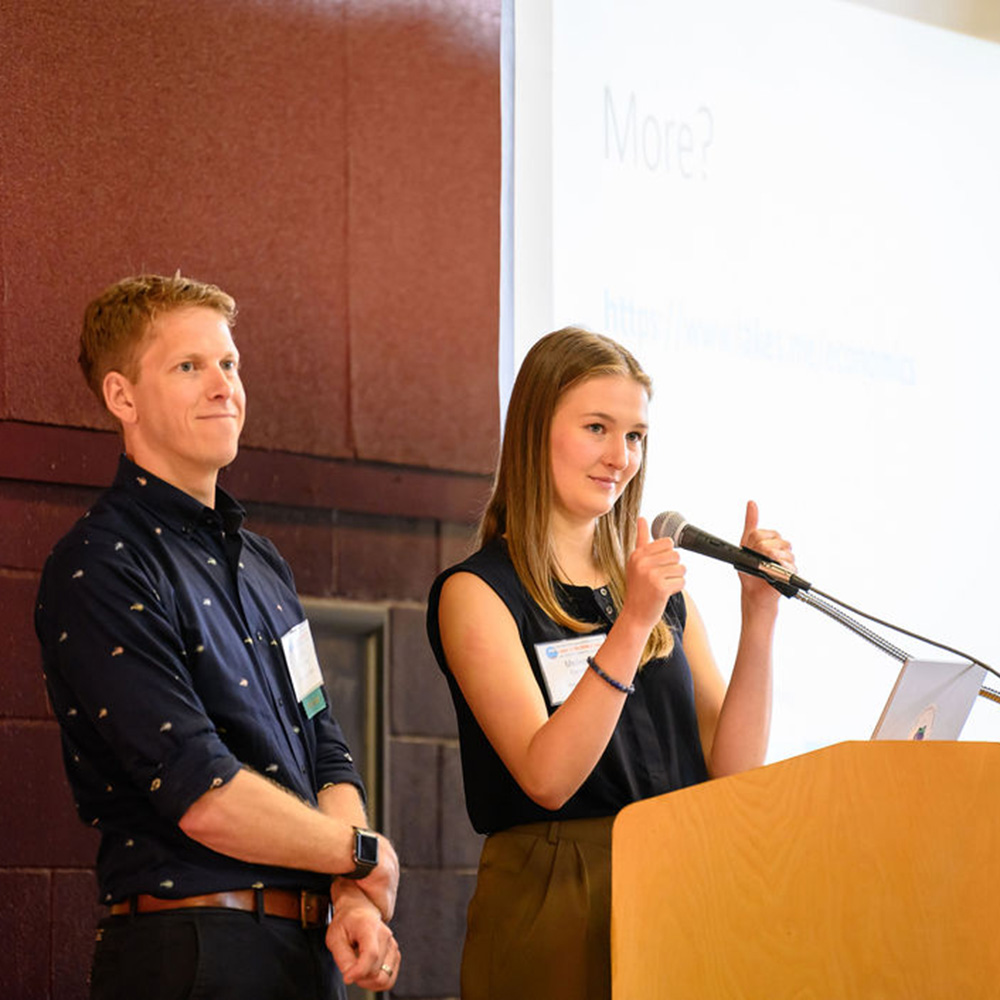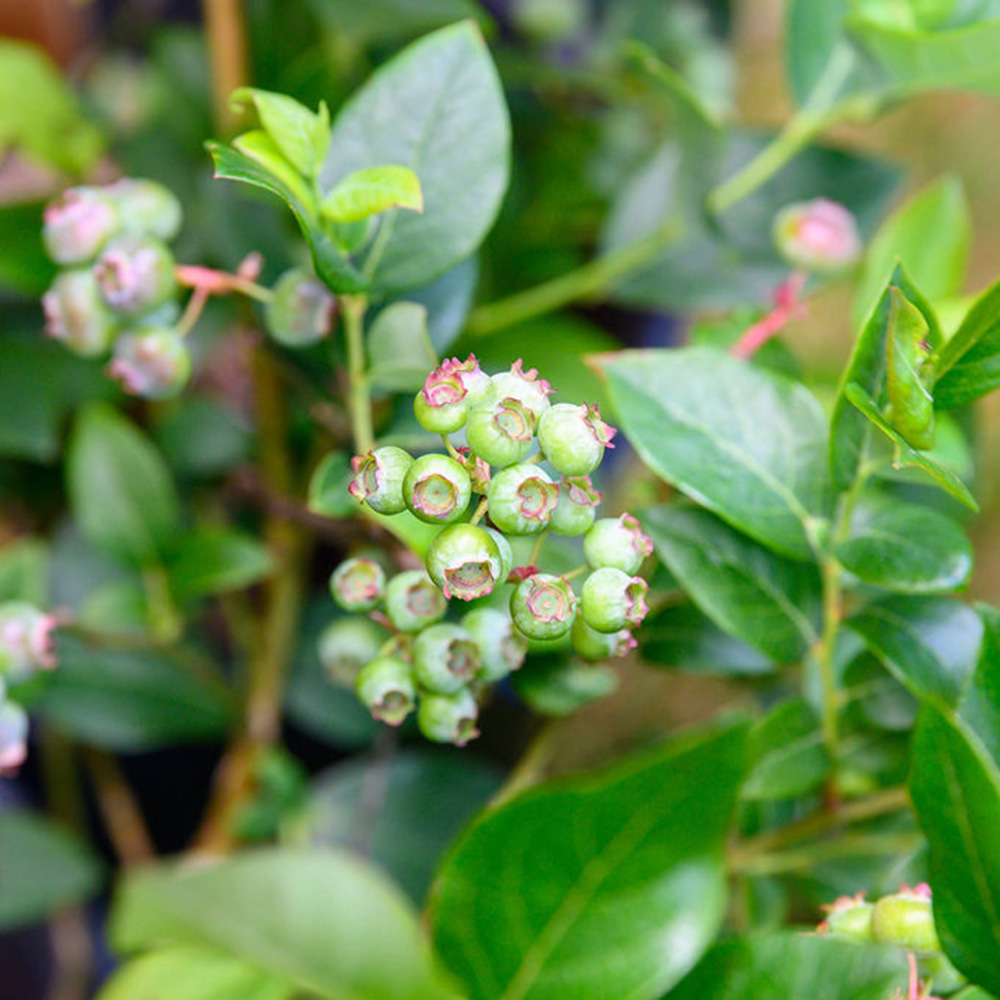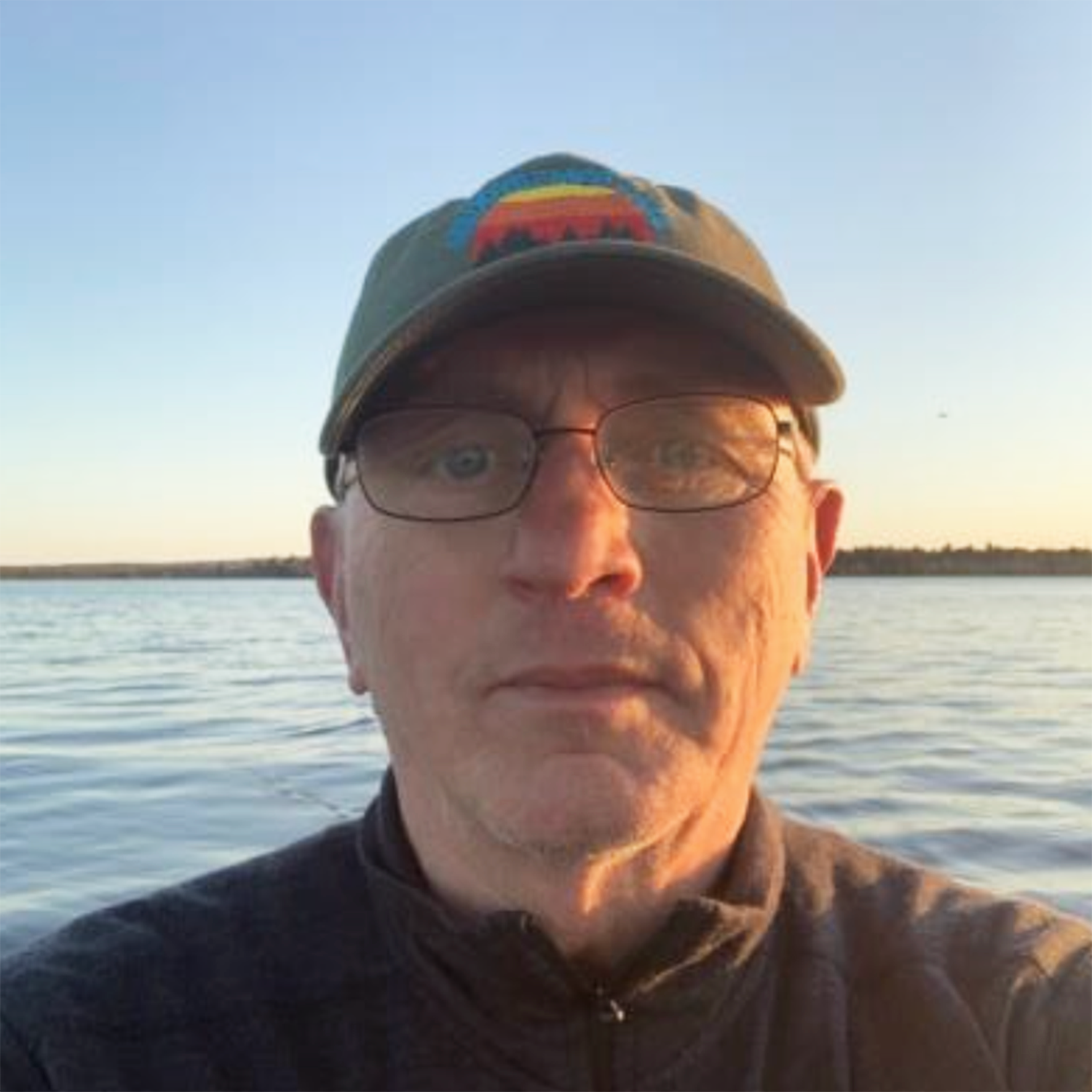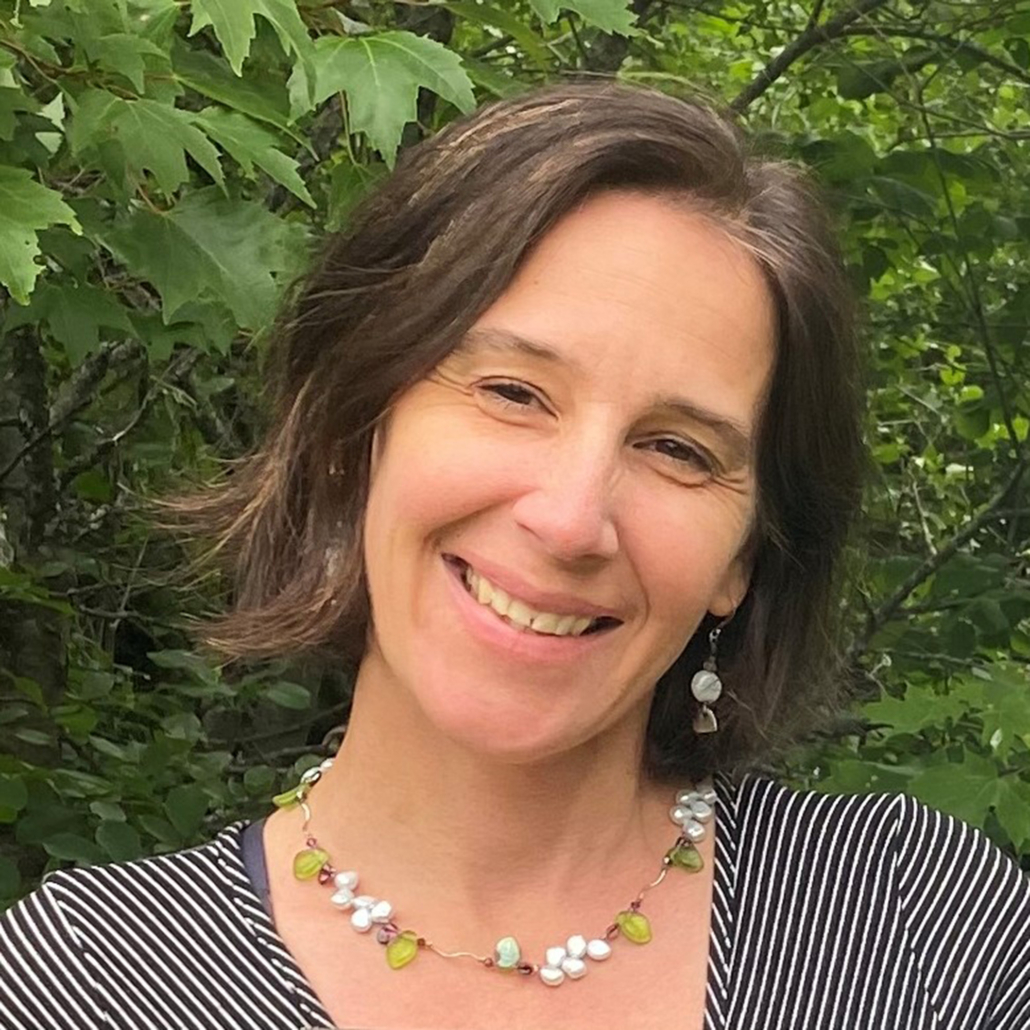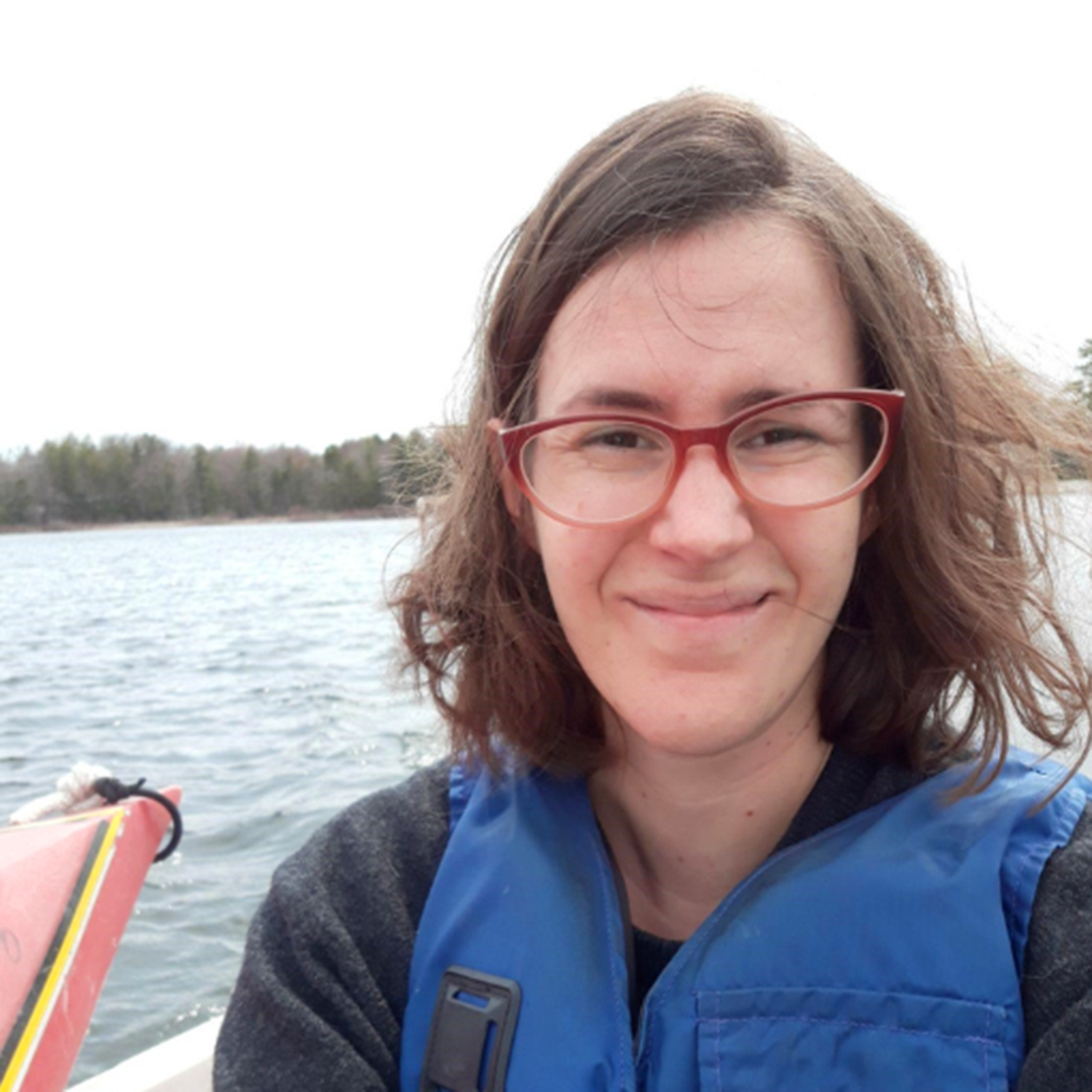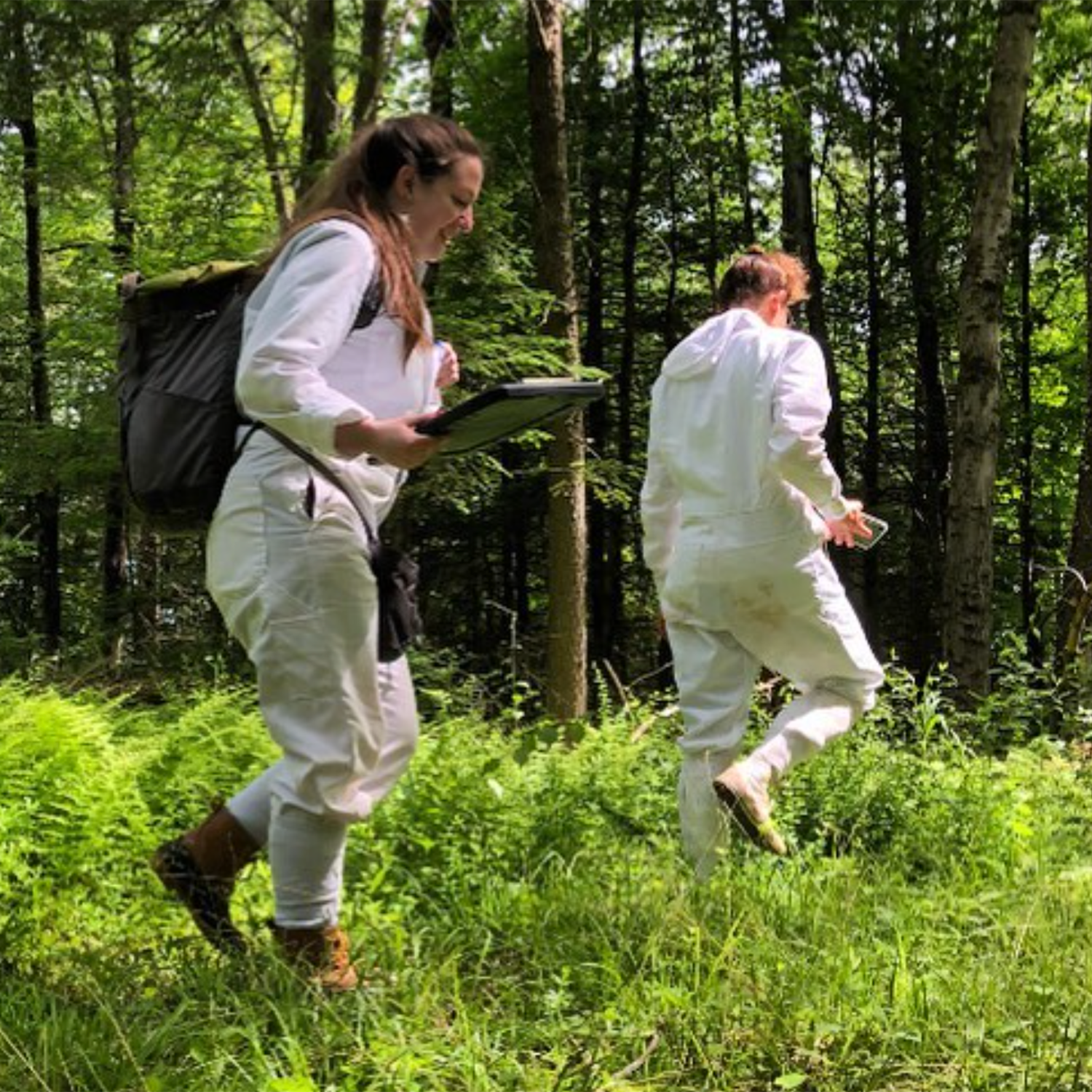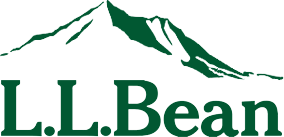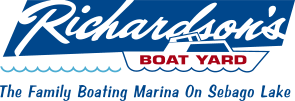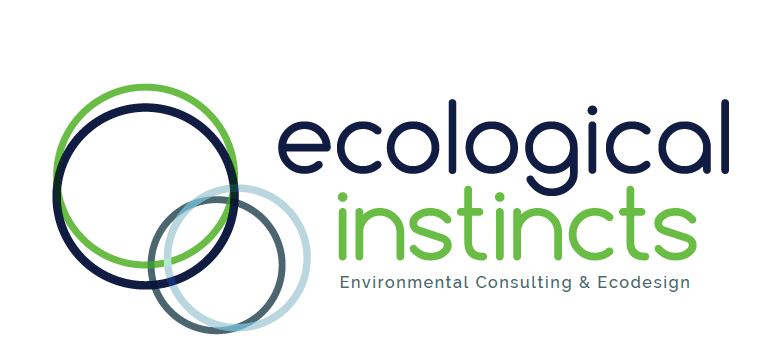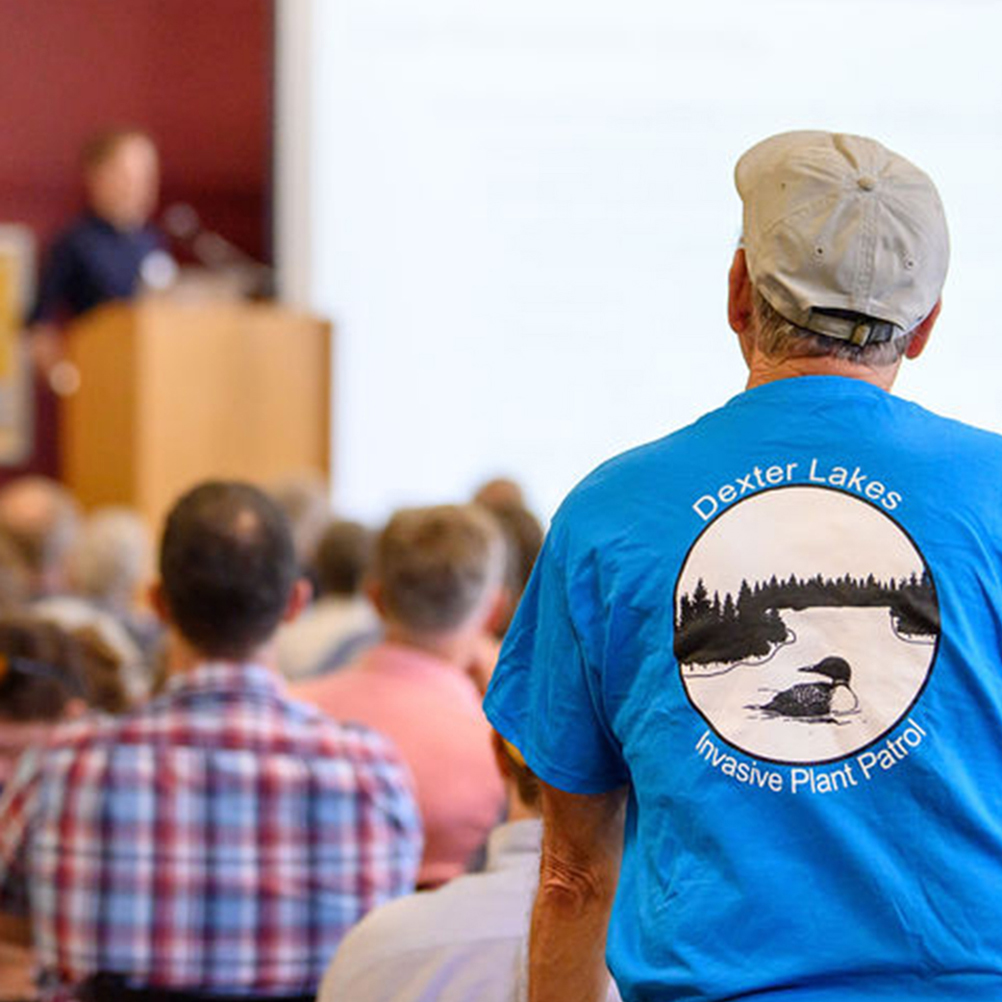You are invited to be part of the 2025
Lakes Conference: Lakes at the Edge
The annual lakes conference theme Lakes at the Edge can be interpreted many ways. Many of our lakes are on the edge of rapidly deteriorating health. They are at the tipping point where just a little more phosphorus in the water will tip them toward recurring algal blooms. Many are at the edge of the carrying capacity for development in their watersheds, where runoff from poorly managed roads, roofs and driveways may push their health to, or over, the edge. And of course much of lake conservation work takes place at the literal lake edge. What can we do in the shoreland zone and surrounding uplands of our lakes that keeps them healthy?
Hosted By Maine Lakes & Lake Stewards of Maine
Guest Speakers & Panel
Jeremy Deeds
Biography
Jeremy Deeds has been an aquatic ecologist with the Maine Department of Environmental Protection since 2014. Prior to that, he worked with the Lakes and Ponds Section of the Vermont Department of Environmental Conservation. He has worked on many aspects of water quality and ecological condition, including lake condition assessments, biological community classification, data modeling, and littoral habitat evaluations. He holds an M.S. in Aquatic Ecology from Kent State University and a Ph.D. in Ecology and Environmental Science from the University of Maine.
Living on the Edge: Shallow-Water Habitat Condition in Maine Lakes
The shallow areas of lakes contain habitats that are critical to all lake life. The conversion of lakeshores to developed land – houses, roads, lawns, etc. – can diminish the quality of this habitat when the shoreland is not managed properly. Biologists at the Maine DEP have been studying the relationship between lakeshore development and the quality of shallow water habitat to better understand this linkage, and consequently make better decisions about where shoreland rehabilitation efforts are needed most. This presentation will show how these measurements are performed, what we are learning about lake habitat, and what these surveys mean for the future of lake protection in Maine.
Chad Hammer
Biography
Chad Hammer is the Invasive Plant Biologist with DACF: Maine Natural Areas Program. Chad earned an M.S. degree in Forestry at The University of New Hampshire (UNH). While at UNH, he conducted research on the invasion patterns and impacts of terrestrial invasive plants on streams and riparian forests and published research on increasing the biotic resistance of native plant communities in riparian forests to non-native plant invasions by planting native trees during restoration efforts after Hurricane Irene.
Prior to MNAP, Chad studied Forest Ecology & Management at the University of Montana and worked with Lake Champlain Research Institute (LCRI) as a research technician assisting in collection and identification of plankton communities and the long-term monitoring of water quality, food webs, and invasive zooplankton within Lake Champlain
The Impacts of Terrestrial Invasive Plants on Riparian Forests & Watershed Ecosystem Services
Non-native invasive species are a major cause of ecosystem degradation and impairment of ecosystem service benefits. Riparian areas are at high risk for invasion because they are among the most human-disturbed ecosystems in the world. Forested riparian areas provide us with many ecosystem services and are vital to streams, rivers, and lakes as they increase habitat complexity and available resources for organisms of many trophic levels. In this talk, we will discuss the impacts of terrestrial invasive plants on riparian forests, soil structure, soil functioning, stream physical habitat, and watershed function.
Rebecca Jacobs
Biography
Talk Title + Abstract
Cary James
Biography
Cary James is the current president of the Meddybemps Lake Land Trust. His wife’s family are lifelong residents of Meddybemps. Cary became involved with the lake in 1975 when he met her. He has been actively involved in monitoring the water chemistry of the lake for over 30 years. In a former life he taught chemistry at Bangor High School where he introduced students to water related research. His students include the 2010 National Stockholm Junior Water Prize (SJWP) winner, the 2011 Bjorn von Euler Innovation in Water Scholarship winner, and the 2016 first place INTEL Science Talent Search “Global Good” award winner. He created the Stormwater Management Research Team (SMART) program at the University of Maine that engaged students and teachers in authentic evidence-based research experiences. When not at the lake he enjoys cycling and completed a self-supported cross country bicycle ride from San Diego, California to St. Augustine, Florida in 2019 at age 68.
Building Trusts at the Lakes Edge
The Meddybemps Lake Land Trust (MLLT) and Downeast Lakes Land Trust (DLLT) recently formed a landmark long-term partnership for the purchase and management of 505 acres of property along Meddybemps Lake including 3.8 miles of shore frontage. DLLT will own the property and MLLT will manage the land. This presentation will focus on mechanisms for creating partnerships between land trusts to protect the shorelines of Maine lakes.
Jen Jespersen
Biography
Jen Jespersen is an ecologist and water resource specialist with more than 20 years’ experience in the environmental field. She works with lake associations, municipalities, Conservation Districts, and state and federal agencies to protect and improve the quality of Maine’s water resources. Jen is a detail-oriented field scientist and watershed planner with expertise in leading and conducting complex watershed projects in Maine and throughout New England.
Jen joined the Maine Lakes Society’s Board of Directors in 2008, serving as the conference chair from 2009-2015, and rejoining the Board in 2017 as 1st Vice President and communications lead. Her passion for protecting lakes stems from her childhood spent exploring beautiful Clearwater Lake in Industry, Main
Visualizing Internal Phosphorus Release from Lake Sediments Using Volunteer-Collected Data
Many Maine lakes, including some of the most bloom-prone on the Maine DEP’s list of “Impaired” lakes and 32 lakes on the “Threatened” lakes lists, are highly sensitive to internal phosphorus (P) release from bottom sediments. While most volunteer monitors aren’t trained to collect water column P data, some watershed groups have taken on this task to better understand internal P loading and its link to summer algal blooms. This presentation provides an overview of monitoring methods and types of data needed to create P mass graphs using volunteer-collected data, and how to interpret the graphs. These results can be used to calculate the mass of P in a lake, gain a better understanding of the role of internal (sediments) vs. external (watershed) P loading during different times of the year, and visualize the lake’s response to environmental factors such as precipitation. Examples will include graphical representations of internal loading from a variety of lakes across the state ranging from shallow unstratified or ephemerally stratified lakes, to deep stratified lakes.
John Maclaine (keynote speaker)
Biography
John Maclaine has served as the Coordinator of DEP’s Nonpoint Source Training Center since 2019. Throughout the last 20 years, John has worked at the intersection of land use, development, habitat and water quality in Maine through diverse roles in shorebird & fisheries restoration, land use and shoreline regulation, construction oversight, and environmental outreach. Through these various roles and a passion for ecological approaches, John’s work currently focusses on providing training and guidance to contractors, homeowners, and others involved in protecting water quality in Maine.
Our Shore: The Nature-based Shoreline Stabilization Toolkit
Over the last few years, the Maine Department of Environmental Protection and Maine Climate and Science Information Exchange at the University of Maine have been partnering with natural resource agency staff, university faculty, municipal officials, and design professionals to develop “O.U.R. S.H.O.R.E”. OUR SHORE is intended to provide guidance and training for using nature-based tools to protect against shoreline erosion, while preserving and restoring natural functions to these important areas. OUR SHORE is a method of comparing options for shoreline stabilization so landowners, contractors, designers, and others can customize solutions for shoreline erosion in a manner that preserves or improves shoreline habitat, functions, and long-term resilience. The OUR SHORE approach relies on targeting the contributing sources of erosion and instability to select and combine tools that will address these causes using the least intervention necessary while using natural, biodegradable or living materials. The guidance provides techniques and considerations to include habitat and shoreline functions into the design of any project, even when riprap is used, so the outcome over time is a naturalized and more resilient shoreline.
Sharon Mann
Biography
Sharon has led the Invasive Aquatics program in the Belgrade Lakes Watershed since 2018. In her tenure at 7 Lakes Alliance, she has found many ways to incorporate scientific research and data collection into Invasive aquatic species survey and remediation efforts. Since 2021, Sharon has been working towards her doctoral degree through the University of Maine as part of a multi-institutional initiative to develop molecular tools for coastal management and communications. The Maine-eDNA project is funded by the National Science Foundation and partners with resource managers across the state. While in the Maine-eDNA program, Sharon learned valuable skills that she is excited to bring back to the lake monitoring community.
Building eDNA Applications for Invasive Aquatic Species Detection to Supplement Monitoring Programs
This presentation will cover the basic concepts, advantages, and shortcomings of eDNA before addressing specific areas of lake management that can benefit from eDNA tools.
Environmental DNA (eDNA) is genetic material left by organisms in their environment. In recent decades eDNA technology has advanced in its abilities to detect algae, zooplankton, fish, and plants in aquatic systems. eDNA applications are best used when paired with existing survey methods as it is a growing field. Numerous side-by-side (eDNA to traditional survey) comparisons have demonstrated strong overlap in species identification for fish and zooplankton and often eDNA detects more species than identified using traditional survey methods alone. For lakes and ponds that do not have established monitoring programs, eDNA may provide an easy and effective way to survey these underserved areas. One of the remaining limiting factors for eDNA applications is the need for accurate and accessible DNA sequencing from verified specimens (i.e. DNA library) to verify DNA sequences from environmental samples. Some groups of organisms (freshwater fish and eukaryotic algae) have decent coverage of DNA sequences in open source libraries while other organisms such as aquatic plants have limited DNA sequences verified sources available. In 2023, 7 Lakes and partners (Bigelow Laboratory, Lake & Watershed Associates, lake associations) launched an ambitious effort to collect voucher specimens of all aquatic plant species (native and invasive) found in Maine to build an accessible, accurate, and trustworthy eDNA library for aquatic plant surveys. The library is slowly building! All lovers of lakes and aquatic plant enthusiasts are welcome to join in on the effort.
Brittany Schappach
Biography
Brittany Schappach is a Forest Entomologist with the Forest Health & Monitoring team at the Maine Forest Service in Old Town. Brittany earned her M.S in Entomology at the University of Maine where she received an award for her interdisciplinary graduate research on blacklegged ticks. She joined the Maine Forest Service in 2022 and enjoys projects where she can teach the public about native and invasive insect species that impact Maine’s forests and human health.
Insects at the Edge: How can bugs impact lake quality?
Healthy trees near watersheds and shorelands can help maintain the quality of aquatic habitats. Native and invasive insects in Maine have the potential to overwhelm and kill trees, reducing their ability to keep our forests and lakes healthy. Tune in to learn how forest pests can impact lake quality, identify symptoms of insect damage, and how forest pests can impact trees and consequently, lakes.
Our Sponsors
Sponsorship Opportunities
Sponsorship Opportunities
Do you have a business that would benefit from connections to lake enthusiasts? Sponsoring the Lakes Conference is a great way to connect directly with over 250 conference attendees as well as more than 5,000 others who see conference advertising, read about the conference in our two organizational e-news, and follow our organizations on social media. It is also a great way to help reduce conference expenses, keeping the conference more affordable for all who would like to attend. Please click here for more information and to donate.
In Kind Donations
We will once again have an amazing assortment of silent auction items for conference attendees to bid on, including native plants, lake décor, books, art, references, and more. Please click here if you would like to donate an item to our silent auction, or know of a business that might consider a donation,
Please email us with any questions. We look forward to seeing you on June 13th!
Registration Information
Lodging at UMaine
If you have any interest in arriving the night before the conference, rooms are available at the University of Maine- Farmington (UMF). To reserve your room, please contact Ernestine at UMF. Click here for the request form. Please note that payment is due prior to check-in. Click here for the room rates.
Sign up for our Lake Conference Newsletter
Click here to subscribe to our Lake Conference Newsletter to find out more about next year’s conference and registration information.
Registration & Cancellation Policy
All cancellations should be sent via e-mail. Expect confirmation within five days. If necessary to cancel by mail, please allow sufficient time for a response. Lake Stewards of Maine and Maine Lakes are not responsible for problems beyond our control such as weather conditions. No refunds will be given in these situations. The final decision on refunds rests with Lake Stewards of Maine and Maine Lakes.

